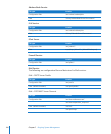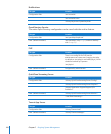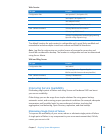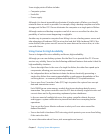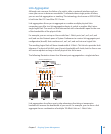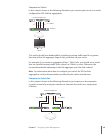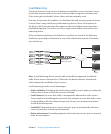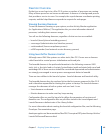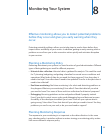
About the Link Aggregation Control Protocol (LACP)
IEEE 802.3ad Link Aggregation denes a protocol called Link Aggregation Control
Protocol (LACP) that is used by Mac OS X Server to aggregate (combine) multiple ports
into a link aggregate (a virtual port) that can be used for TCP and UDP connections.
When your dene a link aggregate, the nodes on each side of the aggregate (for
example, a computer and a switch) use LACP over each physical link to:
Determine whether the link can be aggregated Â
Maintain and monitor the aggregation Â
If a node doesn’t receive LACP packets from its peer (the other node in the aggregate)
regularly, it assumes that the peer is no longer active and removes the port from the
aggregate.
In addition to LACP, Mac OS X Server uses a frame distribution algorithm to map a
conversation to a specic port. This algorithm sends packets to the system on the
other end of the aggregate only if packet reception is enabled. In other words, the
algorithm won’t send packets if the other system isn’t listening.
Mapping a conversation to a specic port guarantees that packet reordering does not
occur.
Link Aggregation Scenarios
Following are three common aggregation scenarios that you can set up:
Computer to computer Â
Computer to switch Â
Computer to switch-pair Â
These scenarios are described in the following sections.
Computer to Computer
In this scenario, you connect the servers directly (as shown in the following illustration)
using the physical links of the link aggregate.
4 x 100 Mbit/s
This allows the two servers to communicate at a higher speed without the need for a
switch. This conguration is ideal for ensuring back-end redundancy.
164 Chapter 7 Ongoing System Management



